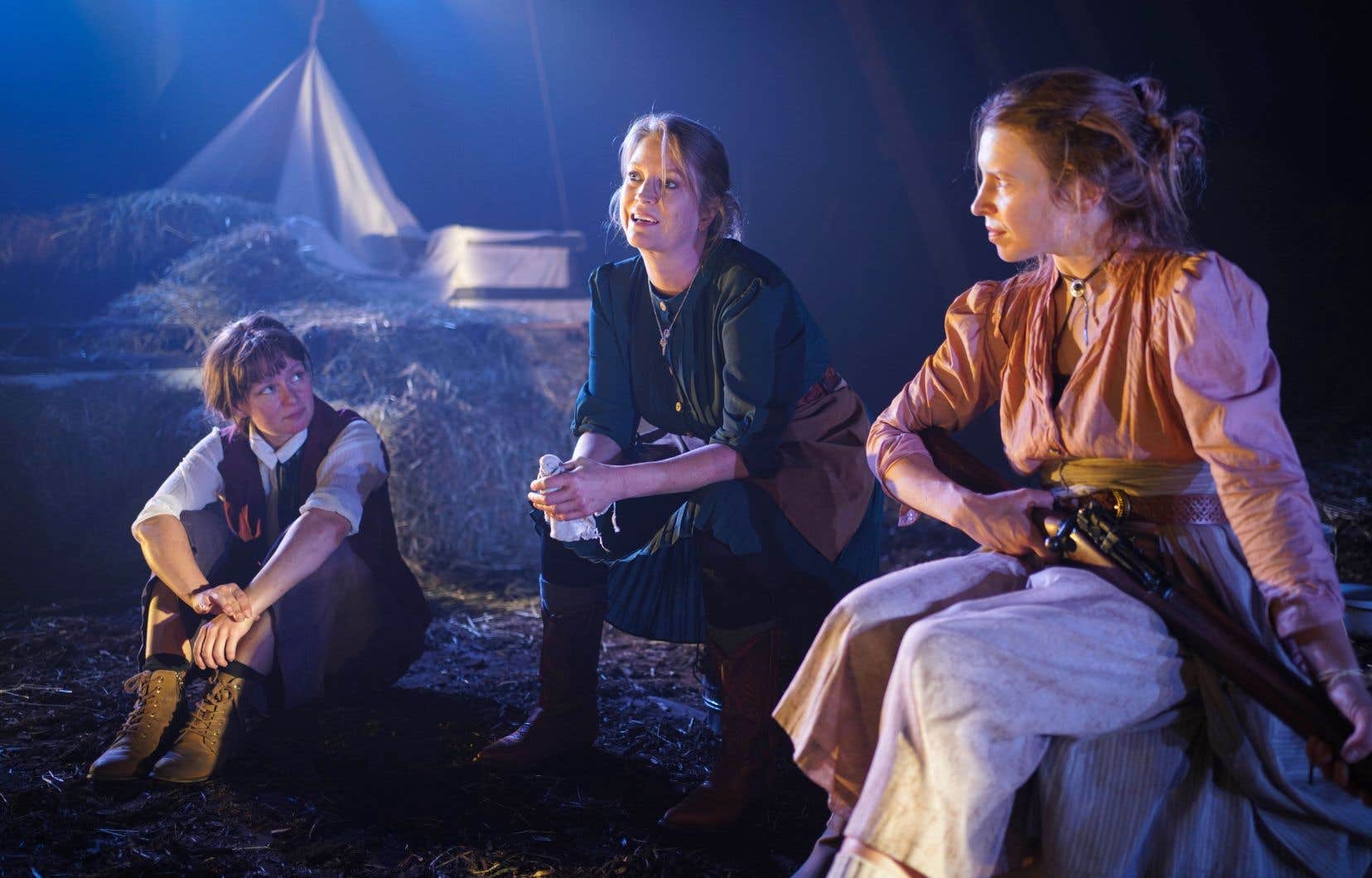We sometimes expect a lot from so-called feminist works or from those which, even for reasons linked to distribution alone, could be labeled as such. Such a horizon of expectation is not fundamentally bad, if we see in it the sign of a contemporary sensitivity which begins to believe that such an angle can bring real breakthroughs.
Before the purple hour immediately presents this salient characteristic of an all-female cast (Catherine Côté, Sophie Dion, Odile Gagné-Roy, Érika Gagnon, Marie-Hélène Lalande and Angélique Patterson), with the exception of the “general” (Nicolas Létourneau). The show, above all, displays a clear ambition: its desire to change the codes of a genre historically carried by actors, alone, directs such a horizon.
But first, it is appropriate to retrace the story cobbled together by the young novelist Maude Bégin-Robitaille, which immediately sticks to the codes of a traditional western. Ranch and cattle, desert plain, bandits: all the elements are there. Not forgetting the dust, the harsh living conditions and the guns at hand, while the war rages in the hinterland. In Margot Hudson’s barn, chance will bring together six women called, some against their will, to determine the general’s fate. The closed session, here, will act as the central device forcing positions to be revealed, alliances to be made and undone, clashes to break out.
Because the purple hour is that of the return of the soldiers. The insurmountable horizon which forces women before the inevitable decision: should we kill the hostage or not? Bégin-Robitaille’s text is thus a canvas where the mother’s hot heart, the daughter’s searching soul and the sister’s fears, the doctor’s righteousness, the ambition of the mayor’s wife are quietly revealed. and the intimate aims of the outlaw.
The multiplication of voices
However, if the lines become clearer, through lies and duplicity, if the components of the western are in their place and the general logic unfolds smoothly, the show will nevertheless leave us far from the characters and the story.
This distance says nothing about the intense distribution, nor the way in which the staging blends the elements into a single piece. The set is rich, starting with the generous decor by Gabriel Cloutier-Tremblay, coupled with the costumes of Emilie Potvin and the lights carved between the boards by Keven Dubois. In the musical conception, Yana Ouellet plays with recognizable codes, but with engaging notes.
Despite this enveloping style, the explosion of the story and its relaxed violence can have the effect of a mechanism which, although it closes perfectly on the characters, will no less appear from a certain distance, in this story for six actresses who , if it does not reinvent the genre, will nevertheless retain the merit of the pitfalls that it has avoided.
Certainly, women’s anger is brewing. Motherhood, the imperatives of the feminine role and other critical elements will be articulated along the way; “the women” in question do not, however, constitute a homogeneous group that could be brought together in a speech, whether of anger or compassion. Before the purple hour thus avoids the trap of a benevolent or lyrical unification of its characters, limiting itself to the work of multiplying points of view, voices.
